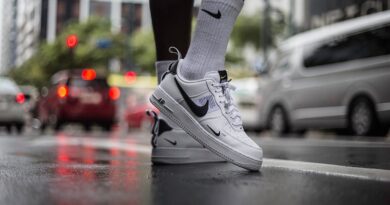The Evolution of Women’s Clothing: A Look at Fashion Through the Decades.
The evolution of women’s clothing has been a reflection of society’s changing values, social norms and political climate. Fashion has always played a significant role in women’s lives, not only as a form of self-expression but also as a way of signaling their social status, economic class and cultural identity. Through the decades, we have seen numerous transformations in the way women dress, from the modest Victorian era to the bold and daring looks of the 21st century. This article will take a look at the evolution of women’s clothing through the decades.
1900s-1920s: The Edwardian Era
At the turn of the 20th century, women’s clothing was still very conservative, with long dresses and high necklines being the norm. However, with the arrival of the Edwardian era, we saw a significant shift towards more fashionable and feminine attire. The introduction of the hobble skirt, corsets, and the S-shaped silhouette gave women a more hourglass figure, highlighting their curves. This was also the time when women began to wear less clothing underneath their dress, with the introduction of the Brassiere in 1913.
1930s-1940s: The Golden Age of Hollywood
During the 1930s and 1940s, women’s clothing once again shifted towards more conservative styles due to the economic depression and World War II. However, this period also marked the golden age of Hollywood, where fashion and glamour were at an all-time high. women’s clothing was designed to accentuate their femininity and elegance, with pencil skirts, fitted blazers, and peep-toe pumps becoming popular. The influence of film stars like Audrey Hepburn, Grace Kelly, and Marilyn Monroe led to a resurgence of femininity in women’s clothing.
1950s-1960s: The Fashion Revolution
The 1950s and 1960s marked a significant shift in women’s clothing, as fashion became bolder, more daring and revolutionary. The introduction of Christian Dior’s New Look in 1947 transformed women’s clothing, with fitted bodices and full skirts becoming the norm. During the 1960s, fashion became even more daring, with the introduction of the mini-skirt and shift dress. This was also the time when women began to wear pants and jeans, challenging the traditional notion that women only wore dresses and skirts.
1970s-1980s: The Rise of Casual Wear
In the 1970s and 1980s, fashion became more casual, with the introduction of leisurewear and sportswear. women’s clothing became more comfortable, with the popularity of bell-bottoms, jumpsuits, and platform shoes. The disco era saw the rise of sequins, glitter, and bold colors, with women’s clothing becoming more flamboyant and expressive. During the 1980s, fashion became even more outrageous, with shoulder pads, power suits, and neon colors becoming popular.
1990s-2000s: The Grunge and Minimalism Era
The 1990s marked a significant shift in fashion, as grunge and minimalism became the norm. women’s clothing became more casual, with the introduction of flannel shirts, ripped jeans, and combat boots. The influence of designers like Marc Jacobs, Calvin Klein, and Donna Karan led to a resurgence of minimalism in women’s clothing. This was also the time when streetwear became popular, with women wearing oversized t-shirts, baggy pants, and sneakers.
2010s-Present: The Age of Diversity and Inclusivity
In the 2010s and present-day, fashion has become more diverse and inclusive, with women’s clothing reflecting a wide range of cultures, identities, and styles. The rise of social media has led to a democratization of fashion, with women from all over the world showcasing their unique styles and creativity. This is also the time when fashion has become more sustainable, with eco-friendly materials and ethical production becoming the norm.
In conclusion, the evolution of women’s clothing has been a reflection of our changing society and cultural landscape. From the conservative Victorian era to the bold and diverse styles of today, fashion has always been a way for women to express their identity, values, and creativity. As we move into the future, it will be interesting to see how fashion continues to evolve and adapt to our ever-changing world.









